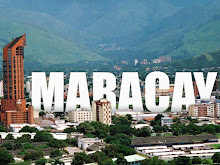Electronic Circuits
A circuit is
a mains (interconnection of two or more components, such as resistors,
inductors, capacitors, power switches and semiconductor) that contains at least
one closed path. A linear circuit, consisting of sources, linear components
(resistors, capacitors, inductors) and linear distribution elements
(transmission lines or cables), has the property of linear superposition. They
are also easier to analyze, using methods in the frequency domain, to determine
their response to direct current into alternating current and transient.
A resistive
circuit is a circuit that contains only resistors and voltage and current
sources. Analysis of resistive circuits is less complicated than the analysis
of circuits containing capacitors and inductors. If sources are direct current,
it is called direct current circuit.
A circuit
board having electronic components is called an electronic circuit. These
networks are generally nonlinear and designs and tools require more complex
analysis.
 components
components
- Component:
A device with two or more terminals where a load can flow inside. In Figure 1
are nine components between resistors and sources.
- Node:
Point a circuit where more than two drivers concur. A, B, C, D, E are nodes.
Note that C is not considered as a new node, since it can be considered as the
same node A as including no potential difference or voltage have 0 (VA - VC =
0).
- Rama:
Set of all branches of between two consecutive nodes. In Figure 1, seven
branches are: the source AB, BC by R1, AD, AE, BD, BE, DE. Obviously, for a
branch can only drive a current.
- Mesh:
Any closed path in an electrical circuit.
- Source:
The component that is responsible for transforming some energy into electrical
energy. In the circuit of Figure 1 there are three sources of current, I, and
two voltage, E1 and E2.
- Conductor:
Commonly called wire; It is a negligible resistance wire (ideally zero)
connecting the elements to form the circuit.
Fundamental Laws
There
are fundamental laws that govern any electrical circuit. These are:
Kirchhoff's current law: The sum of the currents entering through a node must equal the sum
of the currents leaving by that node.
Ohm's law: Voltage on resistance equals the product of the value of said resistance
by the current flowing through it.
Norton's Theorem: Any network that has a source of voltage or current, and at least one
resistor is equivalent to an ideal current source in parallel with a resistor.
Thevenin theorem: Any network that has a source of voltage or current, and at least one
resistor is equivalent to an ideal voltage source in series with a resistor.
Superposition theorem: In a grid with several independent sources, the response of a
particular industry when all sources are active simultaneously is equal to the
linear sum of the individual responses taking an independent source at a time.
If
the circuit is not linear and reactive components may be required other more
complex laws. In applying these laws or theorems a system of linear equations
that can be solved manually or by computer will occur.



































